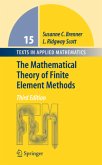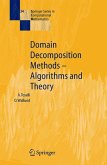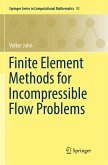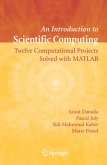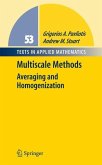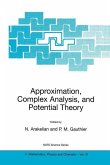This text presenting the mathematical theory of finite elements is organized into three main sections. The first part develops the theoretical basis for the finite element methods, emphasizing inf-sup conditions over the more conventional Lax-Milgrim paradigm. The second and third parts address various applications and practical implementations of the method, respectively. It contains numerous examples and exercises.
The origins of the finite element method can be traced back to the 1950s when engineers started to solve numerically structural mechanics problems in aeronautics. Since then, the field of applications has widened steadily and nowadays encompasses nonlinear solid mechanics, fluid/structure interactions, flows in industrial or geophysical settings, multicomponent reactive turbulent flows, mass transfer in porous media, viscoelastic flows in medical sciences, electromagnetism, wave scattering problems, and option pricing (to cite a few examples). Numerous commercial and academic codes based on the finite element method have been developed over the years. The method has been so successful to solve Partial Differential Equations (PDEs) that the term "Finite Element Method" nowadays refers not only to the mere interpolation technique it is, but also to a fuzzy set of PDEs and approximation techniques. The efficiency of the finite element method relies on two distinct ingredi ents: the interpolation capability of finite elements (referred to as the approx imability property in this book) and the ability of the user to approximate his model (mostly a set of PDEs) in a proper mathematical setting (thus guar anteeing continuity, stability, and consistency properties). Experience shows that failure to produce an approximate solution with an acceptable accuracy is almost invariably linked to departure from the mathematical foundations. Typical examples include non-physical oscillations, spurious modes, and lock ing effects. In most cases, a remedy can be designed if the mathematical framework is properly set up.
The origins of the finite element method can be traced back to the 1950s when engineers started to solve numerically structural mechanics problems in aeronautics. Since then, the field of applications has widened steadily and nowadays encompasses nonlinear solid mechanics, fluid/structure interactions, flows in industrial or geophysical settings, multicomponent reactive turbulent flows, mass transfer in porous media, viscoelastic flows in medical sciences, electromagnetism, wave scattering problems, and option pricing (to cite a few examples). Numerous commercial and academic codes based on the finite element method have been developed over the years. The method has been so successful to solve Partial Differential Equations (PDEs) that the term "Finite Element Method" nowadays refers not only to the mere interpolation technique it is, but also to a fuzzy set of PDEs and approximation techniques. The efficiency of the finite element method relies on two distinct ingredi ents: the interpolation capability of finite elements (referred to as the approx imability property in this book) and the ability of the user to approximate his model (mostly a set of PDEs) in a proper mathematical setting (thus guar anteeing continuity, stability, and consistency properties). Experience shows that failure to produce an approximate solution with an acceptable accuracy is almost invariably linked to departure from the mathematical foundations. Typical examples include non-physical oscillations, spurious modes, and lock ing effects. In most cases, a remedy can be designed if the mathematical framework is properly set up.
From the reviews: "This book represents an excellent compendium of information about the mathematics and numerical analysis of the finite ... . Its user-ability, for the writing ... is guaranteed through the inclusion of a discussion ... . will be a useful text for advanced mathematics/engineering graduates who wish to learn about ... good background information for the engineer who will eventually apply the finite element method to practical real-world problems. In addition, it will be an excellent text for the mathematics graduate ... . (R.S.Anderssen, Mathematical Reviews, 2005) "This book is an expanded version of Lecture Notes published by the authors in French ... . It has been used as a textbook for graduate finite element courses ... . The book can be used in several courses in Mathematics, Computer Science, and Engineering programs. The authors offer suggestions for course titles and syllabi. ... The book is organized into three parts. ... Many bibliographic entries to the extensive literature on finite elements are given throughout the book." (I.N. Katz, Zentralblatt Math, Vol. 1059 (10), 2005) "A relative complete coverage of issues concerning finite element methodology based soundly on theory. ... this is a self-contained presentation which goes relatively far regarding the questions of stability, approximation and error estimation and demonstrates the use of the rather abstract concepts in concrete situations. The presentation is suited for the mathematician and also for applied scientists should they be ready to digest the more abstract concepts which, however, prove very useful understanding how to obtain a working code for the problem at hand." (H. Muthsam, Monatshefte für Mathematik, Vol. 148 (2), 2006) "Overall, the authors have largery succeeded in giving a rather comprehensive exposition of the finite element method and its challenges, up to some current research topics, in less than 500 pages, yet without taking any unreasonable shortcut, by no means an easy task." (SIAM Review)



